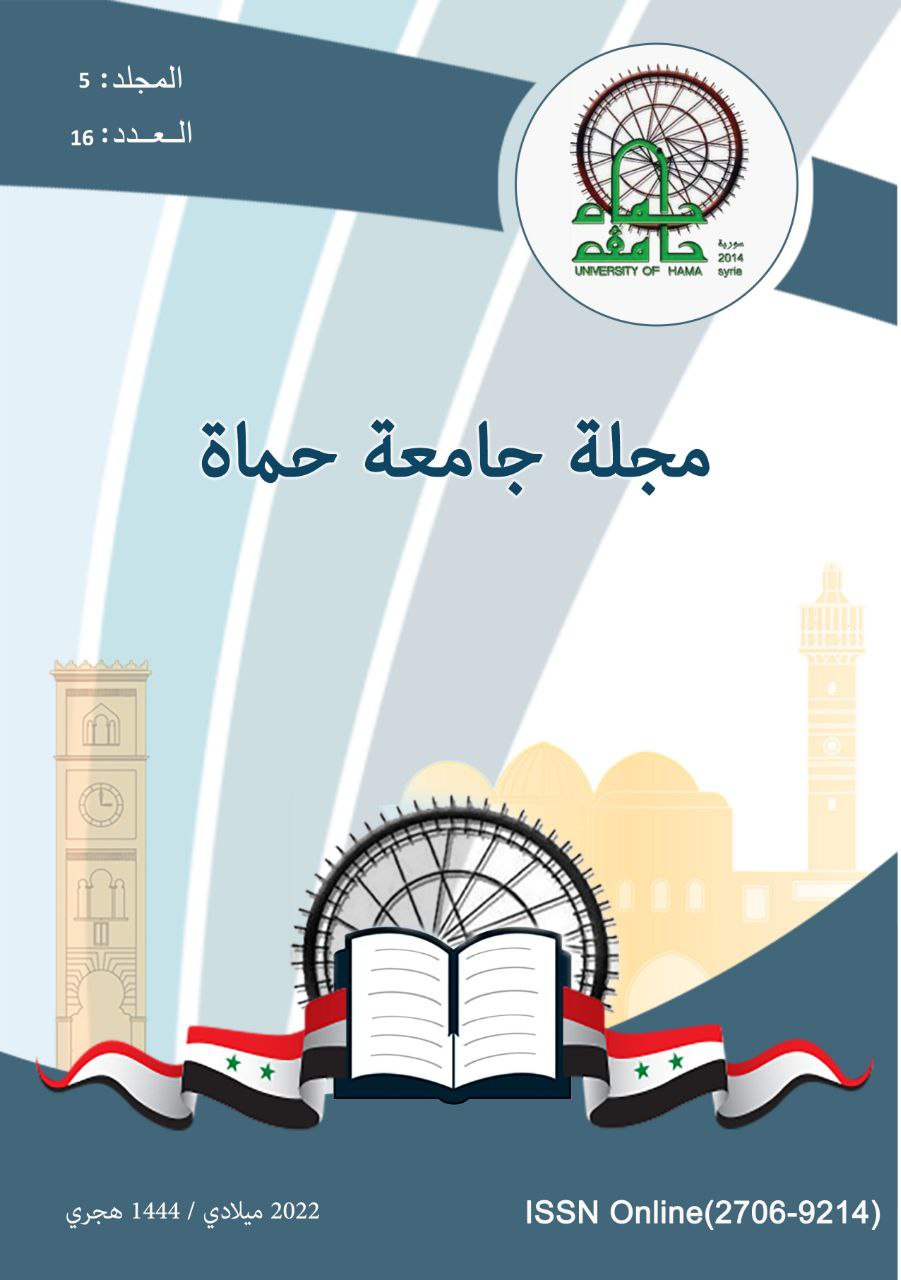Evaluation of the information of the nursing staff at Hama national Hospital about infection control
الملخص
Infection is one of the most important risks facing the health team and patients in hospitals, as it causes multiple complications, resulting in a delay in the recovery of patients, disability or diseases that may increase the length of stay in the hospital, Consequently the consumption of medicines increases, and the need for diagnostic tests increases, and these diseases are considered among the most important causes of death, Therefore, the application of correct practices to combat infection in health facilities is one of the most important ways to ensure the quality of health services.
Evaluation of the information of the nursing staff at Hama national Hospital about infection control.
A descriptive cross-sectional study was performed on convenience sample of 100 nurses from all departments of Hama National Hospital; the data was collected through a questionnaire form developed by the researcher.
The results showed that the highest percentage of nursing staff 60% have a medium level of information about infection control, 38% have a good level of information about hand washing, 60% have an average level of information about place protection measures, and 76% have an average level of information about personal protection measures.
The current study recommends setting pictorial instructions in the workplace explaining infection control procedures, continuous education of the nursing staff about them, monitoring compliance with them and conducting similar research on a larger sample.
References
2- AVSC, 1999. Module 2: Importance and purpose of infect control. Infection control curriculum: A training course for health care providers and other staff of hospitals and clinics: Trainers manual. New York: AVSC International, 27-39.
3- CDC General information on Hand . Hygiene ( 2017).
4- According to p. 35 of the Redway/Fawdar presentation, "Note: this study has not been peer.
5- Randa, et al., 2014. Impact of an antibiotic restriction policy on hospital expenditures and bacterial susceptibilities: a lesson from a pediatric institution in a developing country. Pediatr Infect Dis J 19(3): 200-6 .
6- Sadegi, et al., 2009. Feeding back surveillance data to prevent hospital acquired infection. Emerg Infect Dis 7: 295-8 .
7- WHO, 2014. Prevention of hospital-acquired infections. A practical guide, 2nd edition.
8- Rajakumari, et al, 2018. To evaluate the information of the nursing staff in the intensive care department in Jordan a three year prospective study at the Jordan University Hospital, 2015-2018. Am J Infect Control 25: 322-9.
9- Mohamed, M.K., Strickland, G.T., et al, 2011. The role of parenteral antischistosomal therapy in the spread of hepatitis C virus in Egypt. Lancet355 887 -91.
10- saral, et al, 2014. Infectious waste surveys in a Saudi Arabian hospital: An important quality improvement tool. Am J Infect Control 29: 198-202.


